2D PlANES
“characterised by their axes”
➤ Straight Axis Plane

➤ Complex, Bent, & Curved Axis Planes (in order)
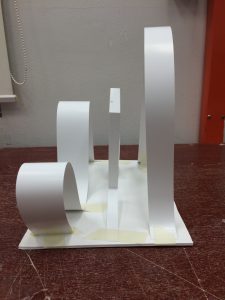
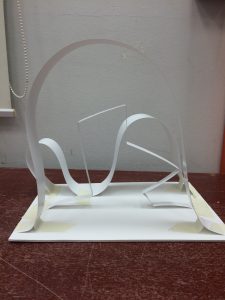
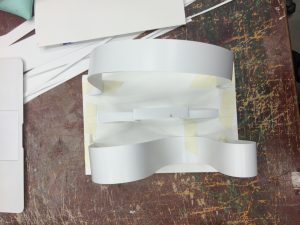
3D PLANES
“characterised by their transitions in space”
➤ Curved Plane
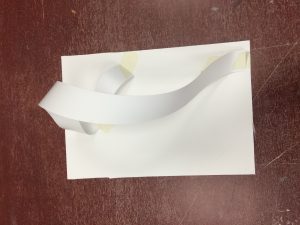
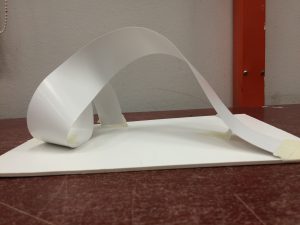
➤ Broken Plane

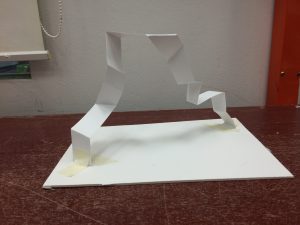
➤ Twisted Plane
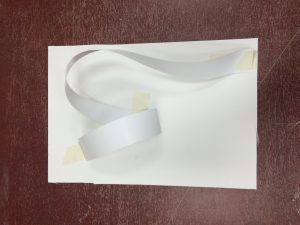
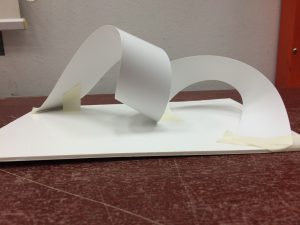
2D PlANES
“characterised by their axes”
➤ Straight Axis Plane

➤ Complex, Bent, & Curved Axis Planes (in order)



3D PLANES
“characterised by their transitions in space”
➤ Curved Plane


➤ Broken Plane


➤ Twisted Plane


This time round, the project we were assigned to didn’t require rectilinear shapes, but rather, curvilinear. In all honesty, I found making these shapes significantly harder as sanding and measuring had to be taken into account to form shapes such as cylinders, spheres, and cones.
Nevertheless, I came up with 3 models that demonstrated the use of previously-taught things such as dominant, sub-dominant, and subordinate pieces and then also tried to incorporate precarious, dependent, and independent balance. Below are the models that I have developed. Model 1 is the model that I will be focusing on to make into my final exhibit-quality model; the last two are part of the process I went through to understand curvilinear models better.
Model 1 – “Decapitation”
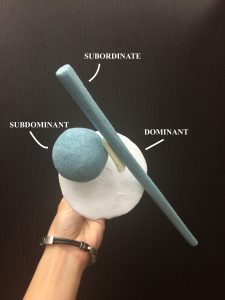
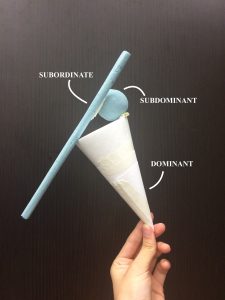
This model is what I plan to make for my final piece. I like the void that exists between all three pieces, as well as the dependent balance between the dominant and the subordinate piece. However, I think the presence between all three needs to be exaggerated (as in, the dominant needs to be bigger or the subordinate needs to be finer). The improvements are displayed below in the 2D sketch analysis:
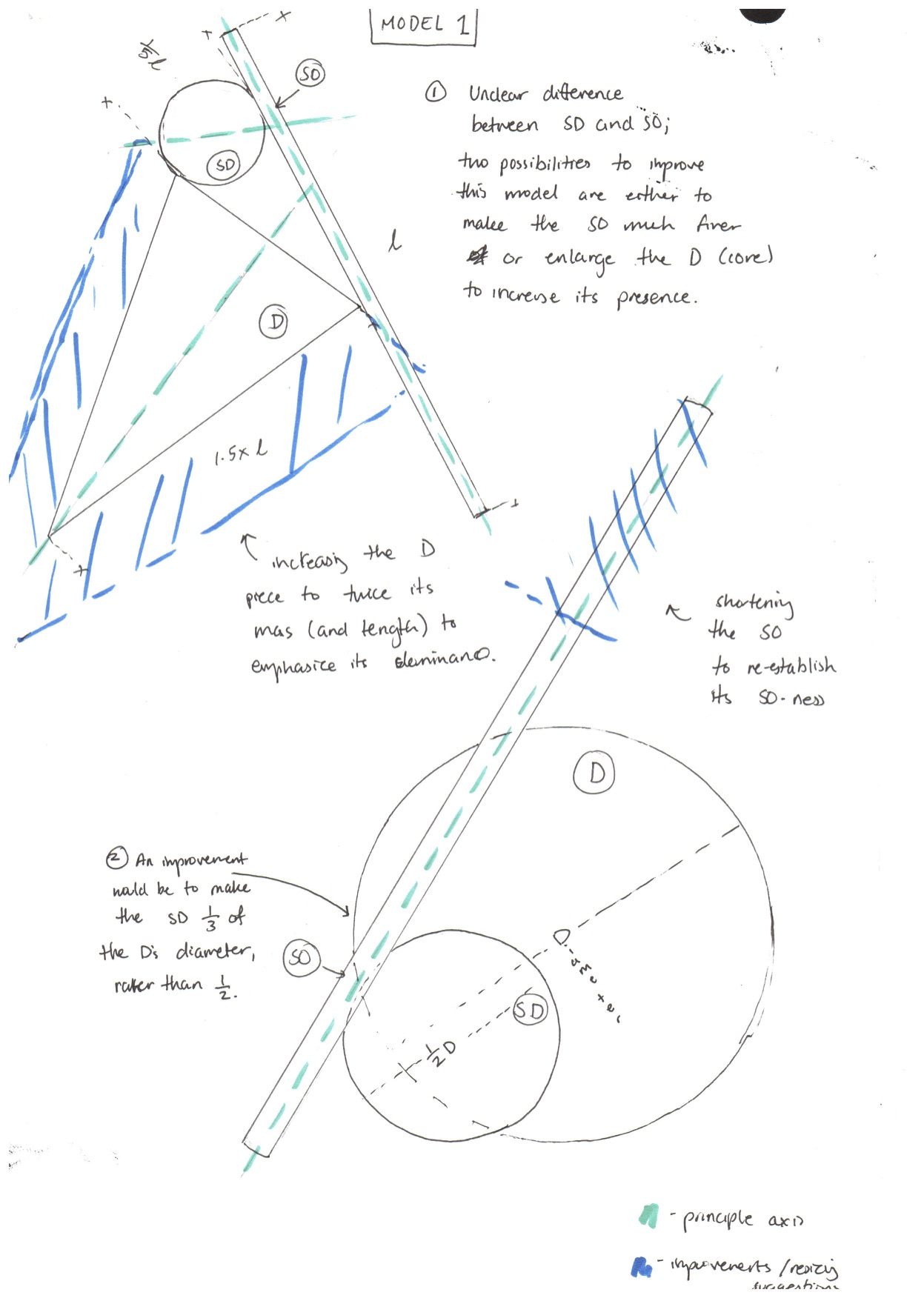
Model 2 – “Overfed Traveller”
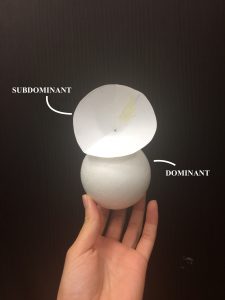
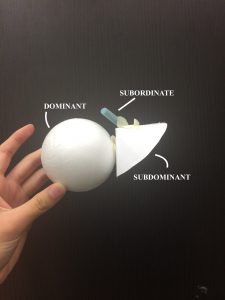
This model had no disparity between the dominant and the sub-dominant piece; especially from the photo on the left, one cannot tell which is the dominant piece. However, I felt this demonstrated precarious balance as I planned to make the model rest on the edge of the cone only, supporting both the subordinate and the dominant pieces. The improvements for this model are in the 2D sketch analysis featured below:
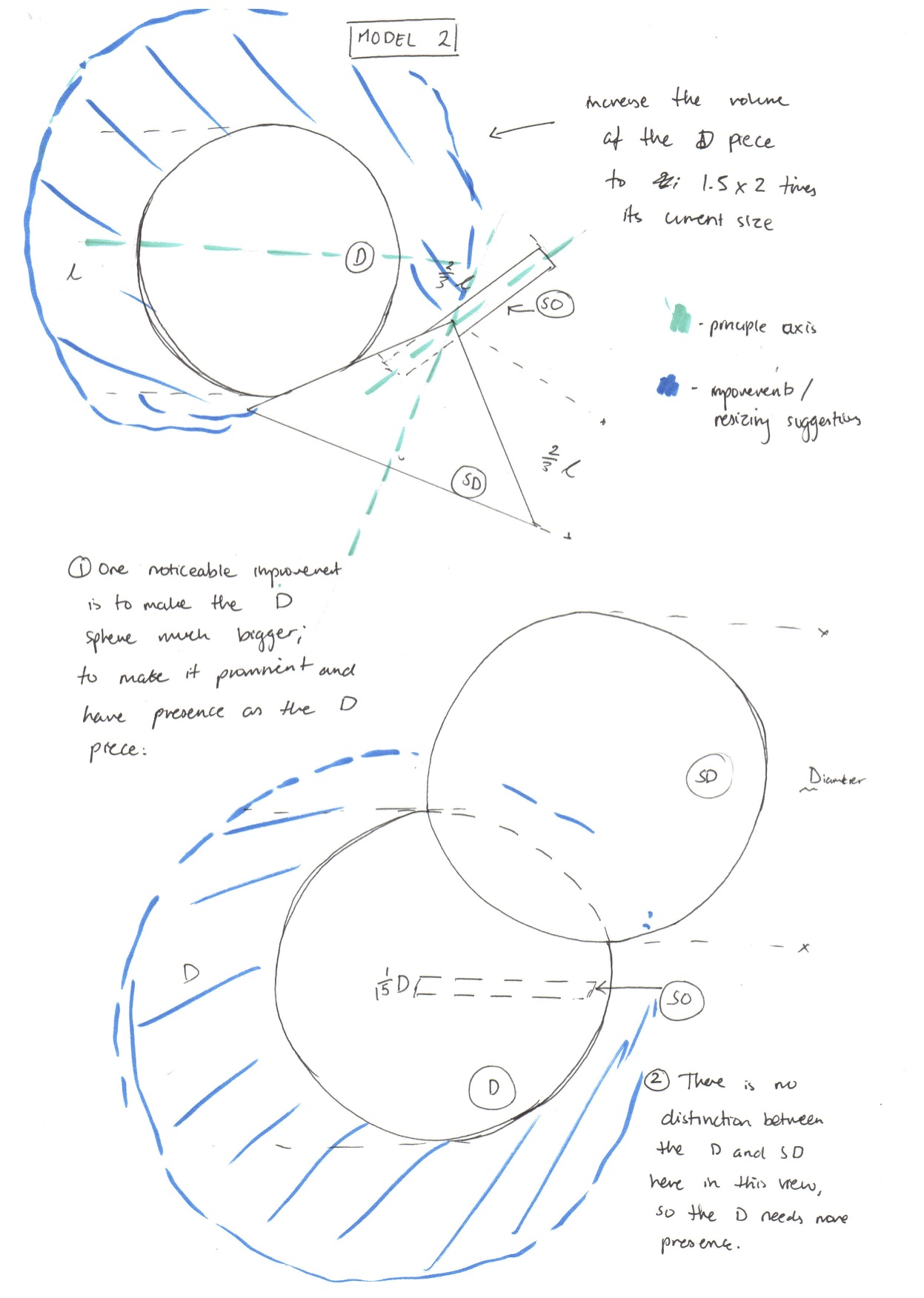
Model 3 – “New-Age Drumkit”
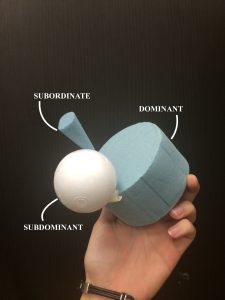
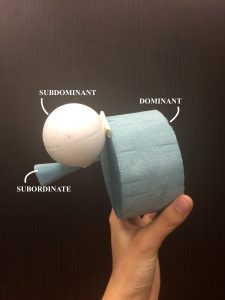
This model uses dependant balance between the cylinder and the sphere (will be resting on both pieces) while the cone sticks out as the subordinate piece. However, there are a few improvements to be made to this model as outlined in the 2D sketch analysis:
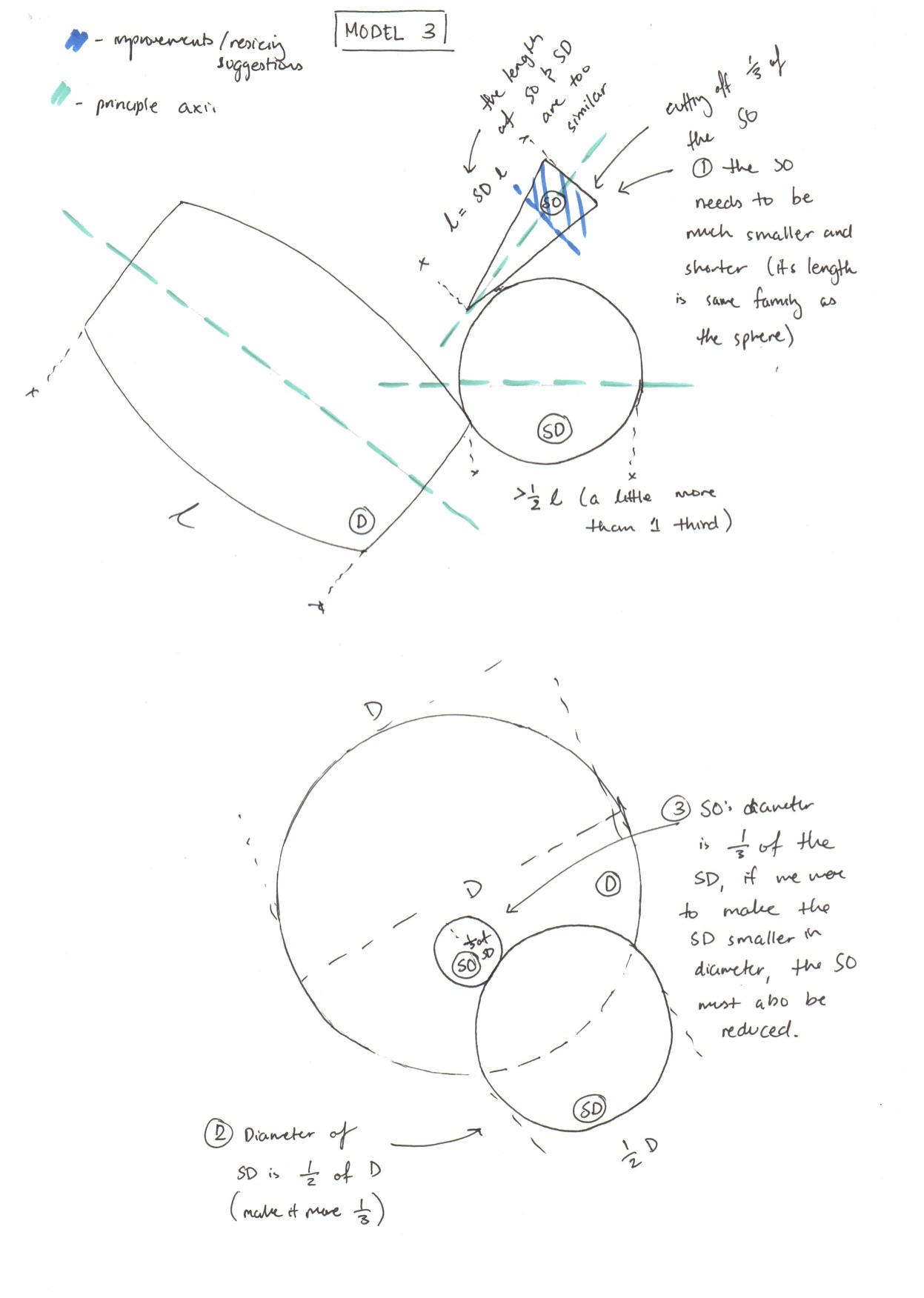
The final 3D sketch model I have chosen also makes use of voids. I felt this model represented an interesting and aesthetically pleasing figure while at the same time maintaining the properties of dominant, subdominant, and subordinate pieces.
FINAL MODEL

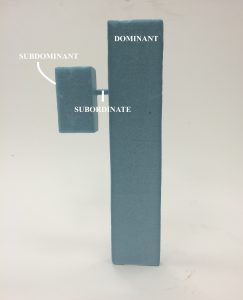
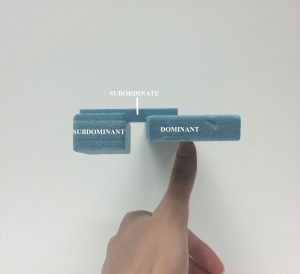
From the model above, I created a 2D analysis of how to improve it. I like having the voids in the middle between the subdominant (SD) and the dominant (D) pieces connected by the subordinate (SO) piece. But as mentioned in the 2D sketch analysis, I feel as though the D piece needs to have more presence to fully capture the essence of a dominant piece. Therefore, though it is larger lengthwise, I want to add more volume to the piece. The length of the SO and the SD are also quite similar (suggests same family) so I will shorten the length of the SO to clearly define their differences.
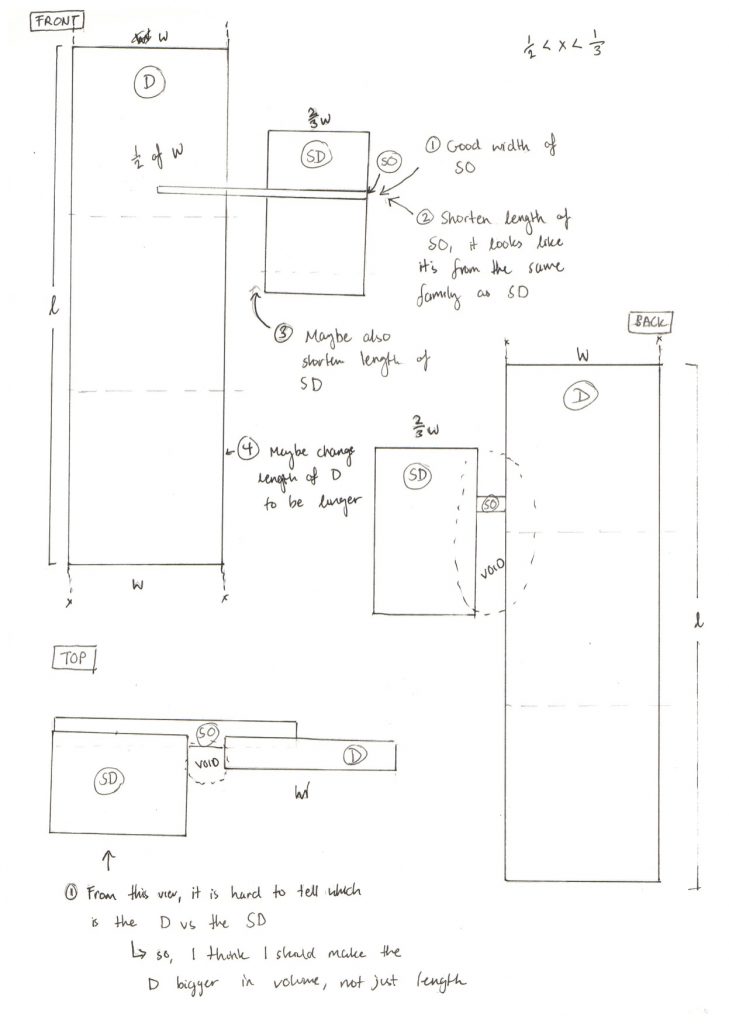
For my 3D sketch models, I created 3 that I felt could show the properties of dominant, subdominant, and subordinate pieces. However, not all of the were able to portray these properties in an interesting and engaging way and so I picked out one favourite amongst the 3 that I wanted to be my final model. The two least favourite are discussed below.
01. Sketch Model 1
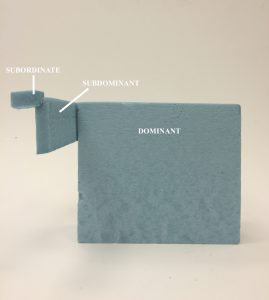
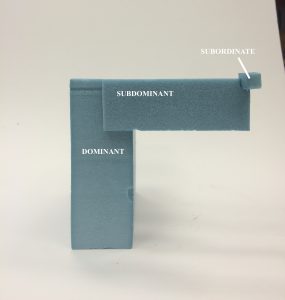
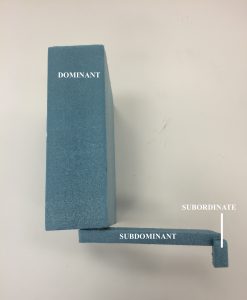
For this sketch model, I conducted a 2D analysis that highlighted areas of improvement. For example, the length of the subdominant and the dominant pieces are quite similar; they look as though they are from the same family.
In my 2D sketch analysis, I have added small notes and measurements of the model to comment on some of the improvements and the properties of the model with regards to the dominant, subdominant, and subordinate pieces.
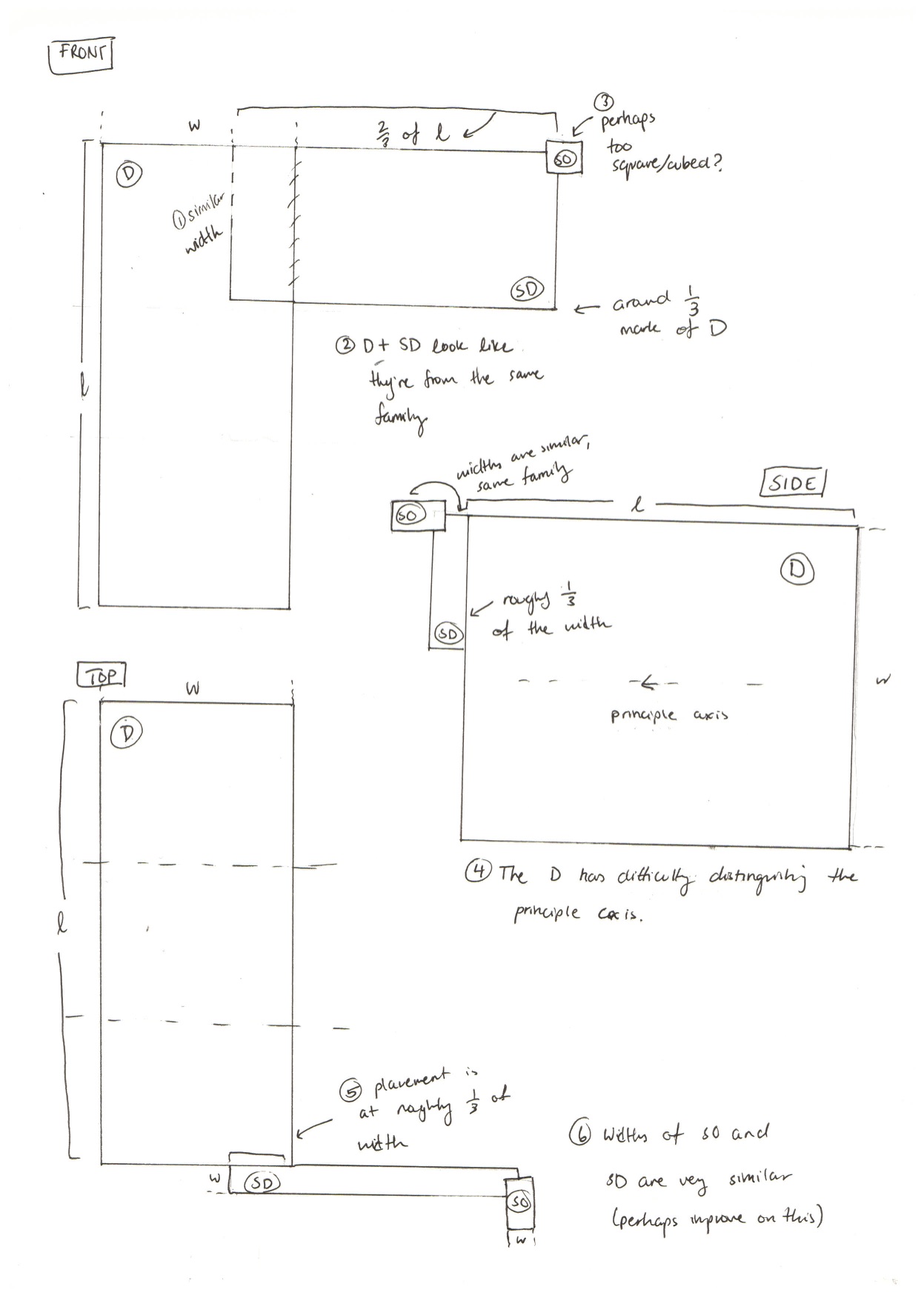
02. Sketch Model 2
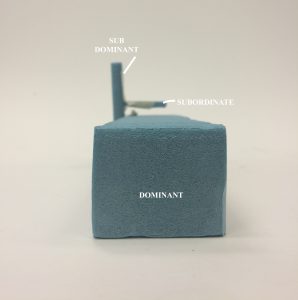
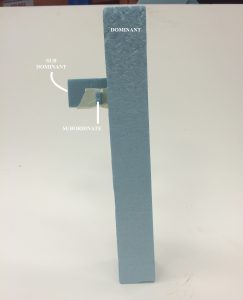
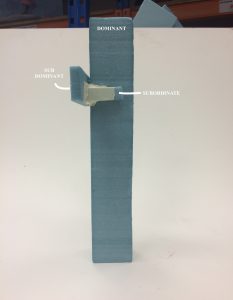
This sketch model makes use of voids and of levitating pieces to add aesthetic properties and to make the model more interesting overall. However, the placement of the subordinate (SO) did not make use of all the axis of x, y, and z, as from the back the SO was not visible. Additionally, the widths of the SO and SD are similar and look as though they’re from the same family. To improve this model, I would shorten the width of the SO to be 2/3rds of the SD and also possibly move up the SD to sit on the 1/3rd line of the dominant piece.
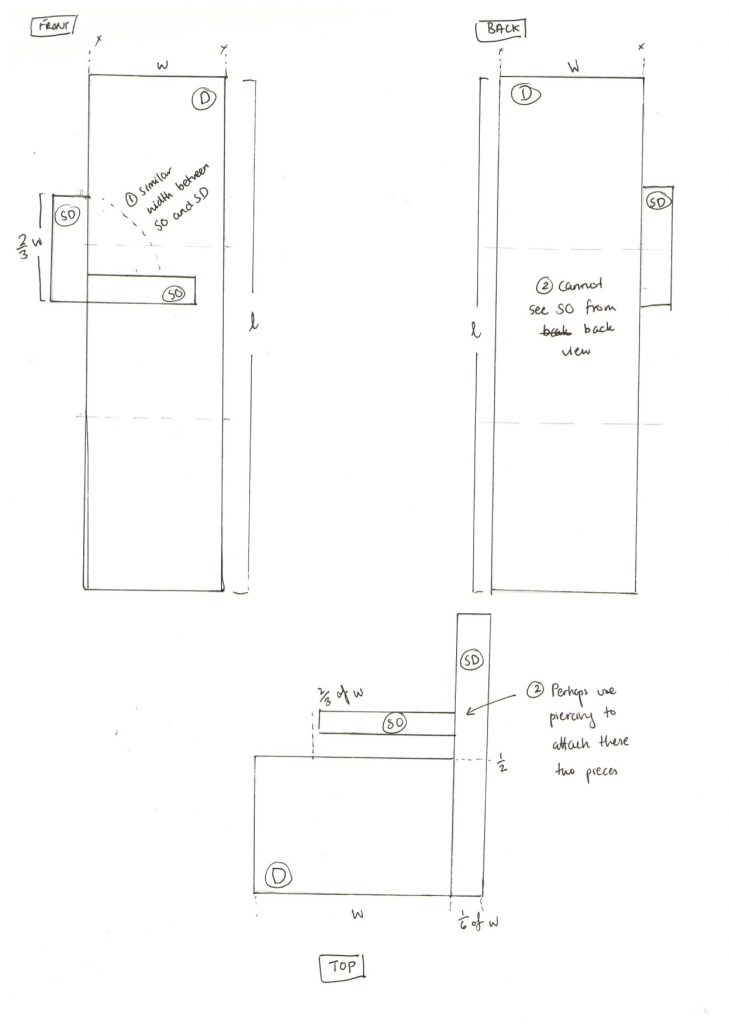
These two models were the models that I decided were not ‘exhibition-worthy’ enough, per se, and so I decided to just show how they could be further improved.
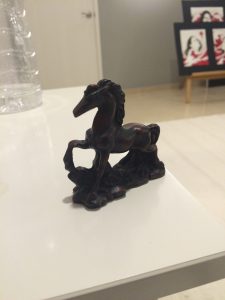
This personal object is interesting to me because of how well it flows from one aspect to another, from the base to the legs to the actual body of the horse as well as the horizontal principal axis. I like how the medium itself is lighter in areas that would catch the light and darker in the areas that are shadowed. I think it’s quite an organic shape and it has a very harmonious shape.
The dominant shape is the main figure of the horse, where I think the sub-dominant is the base/grounding that the legs are attached to. In my opinion, there are multiple sub-ordinates, such as the details that are etched/carved into the horse as well as the colouring itself.